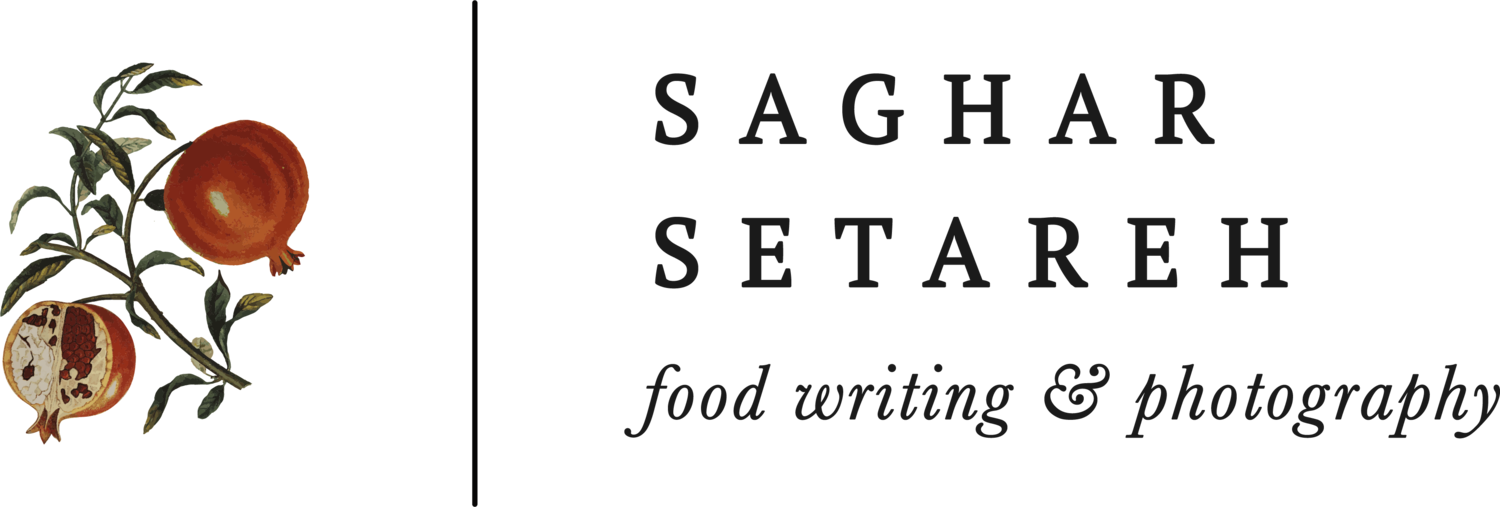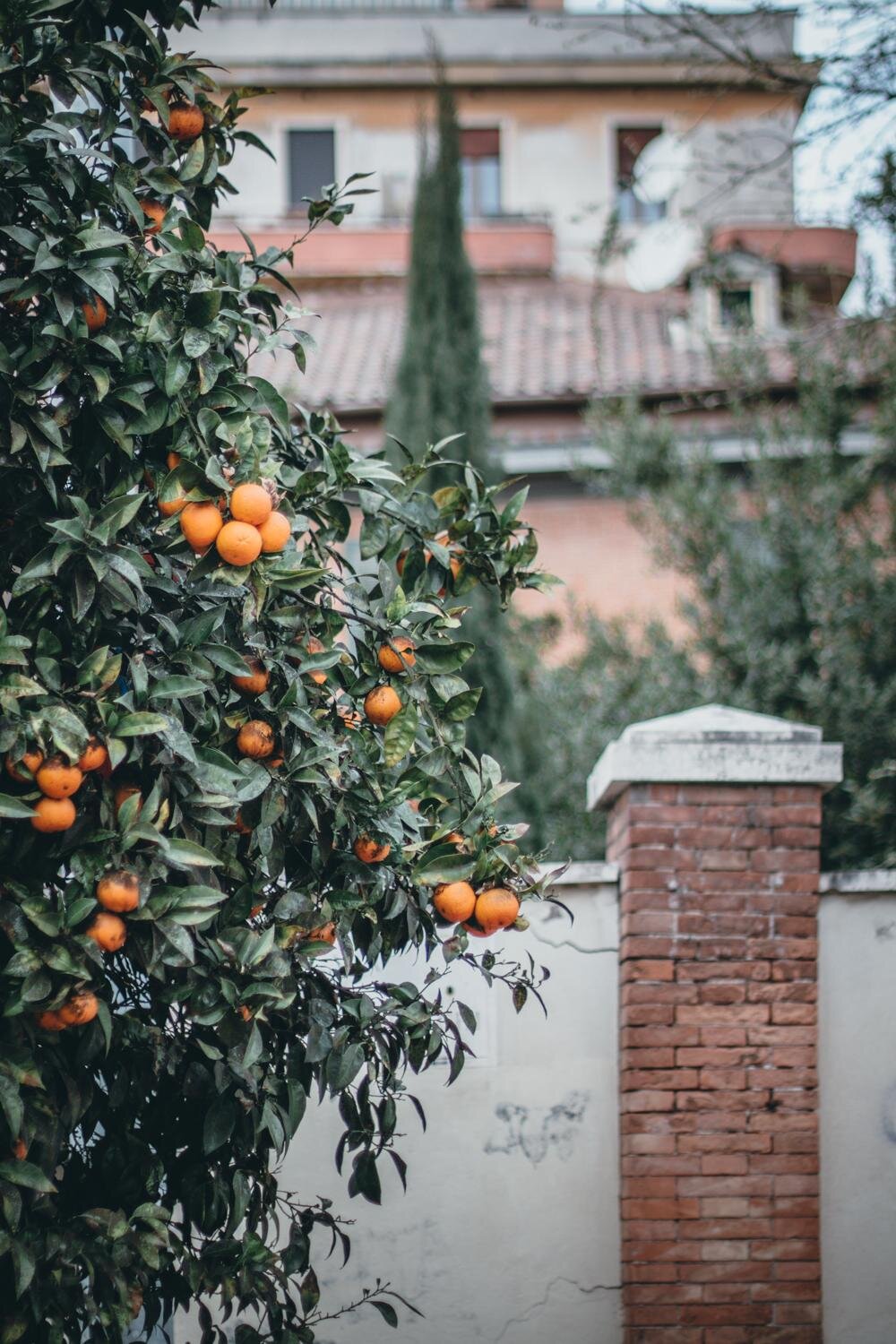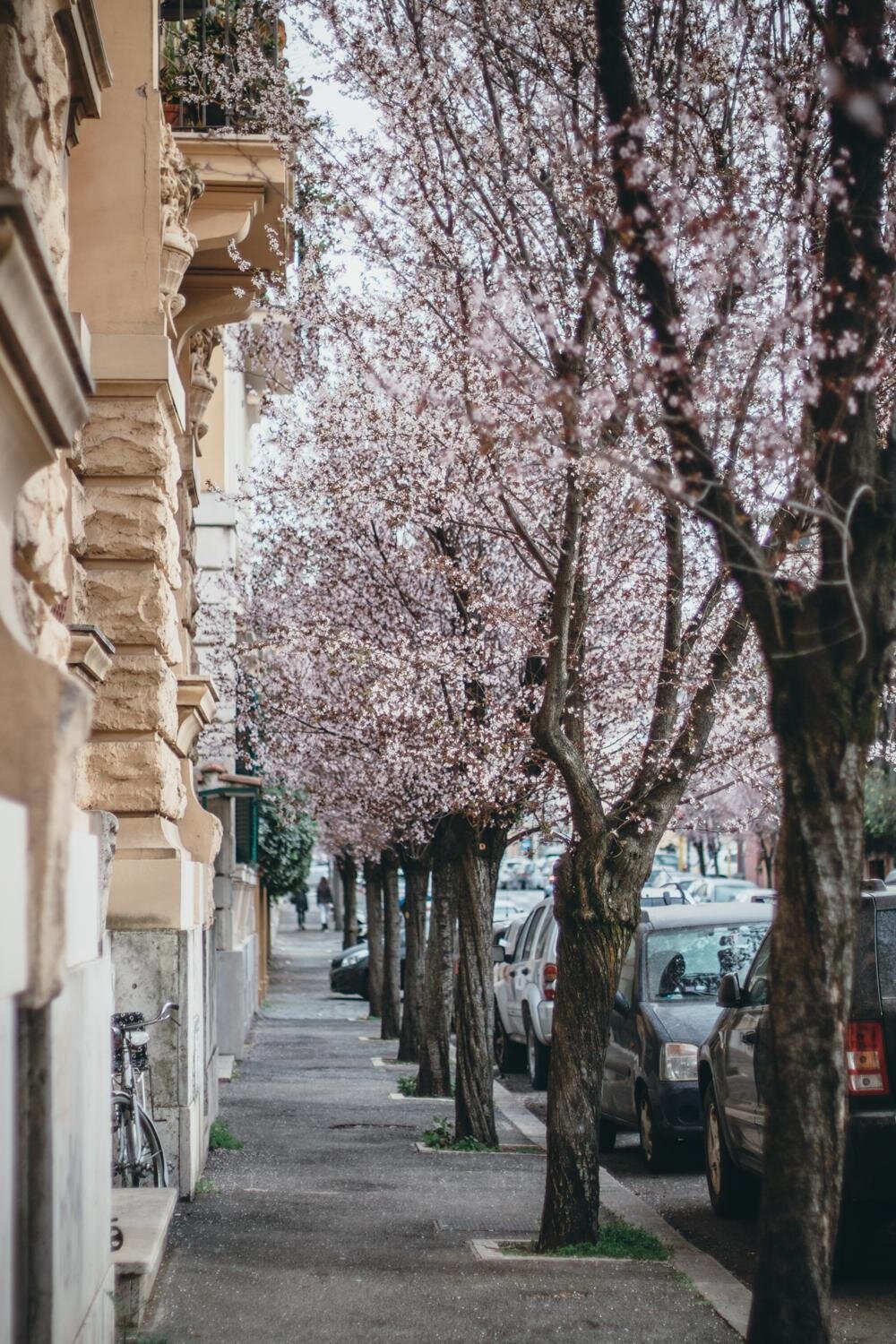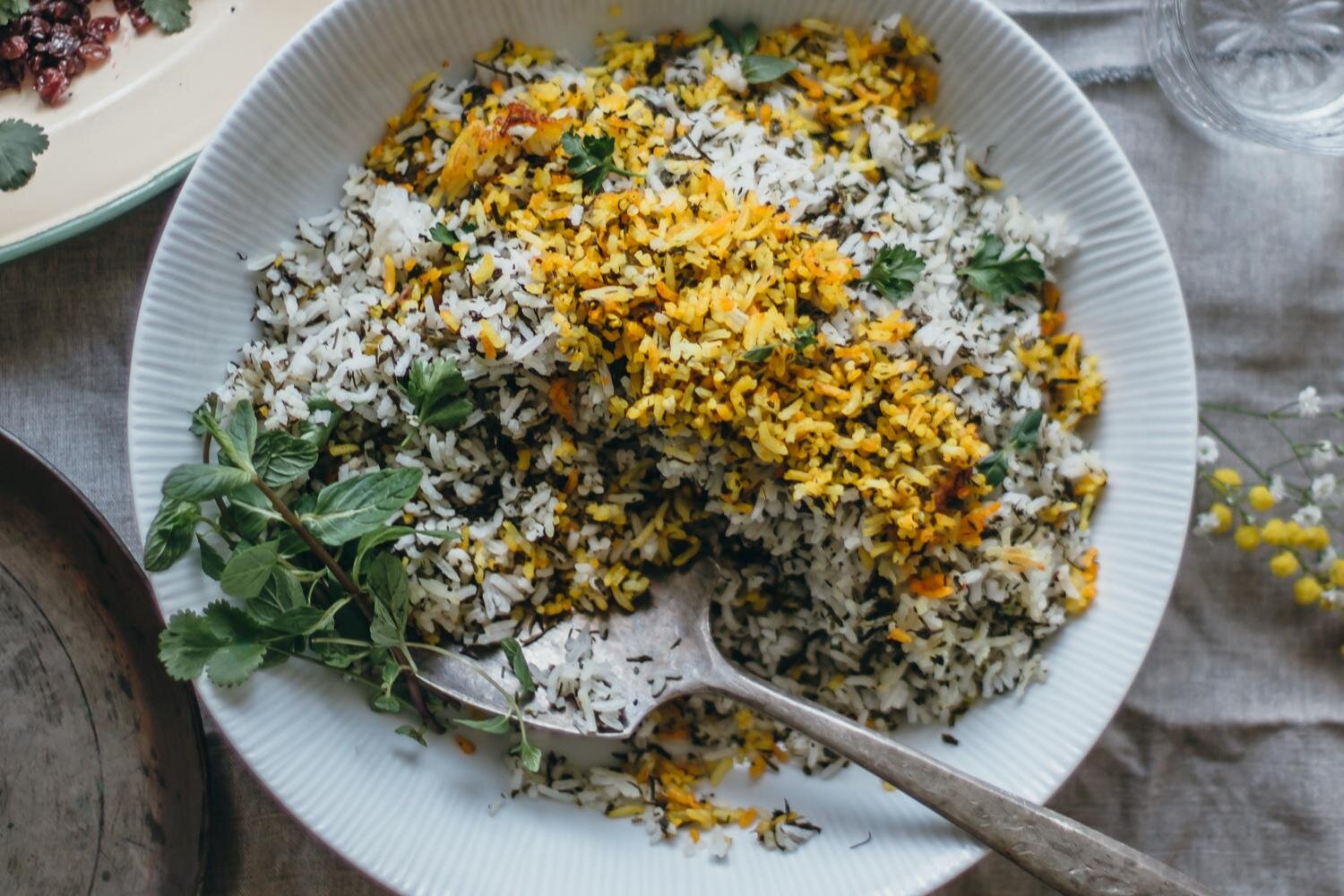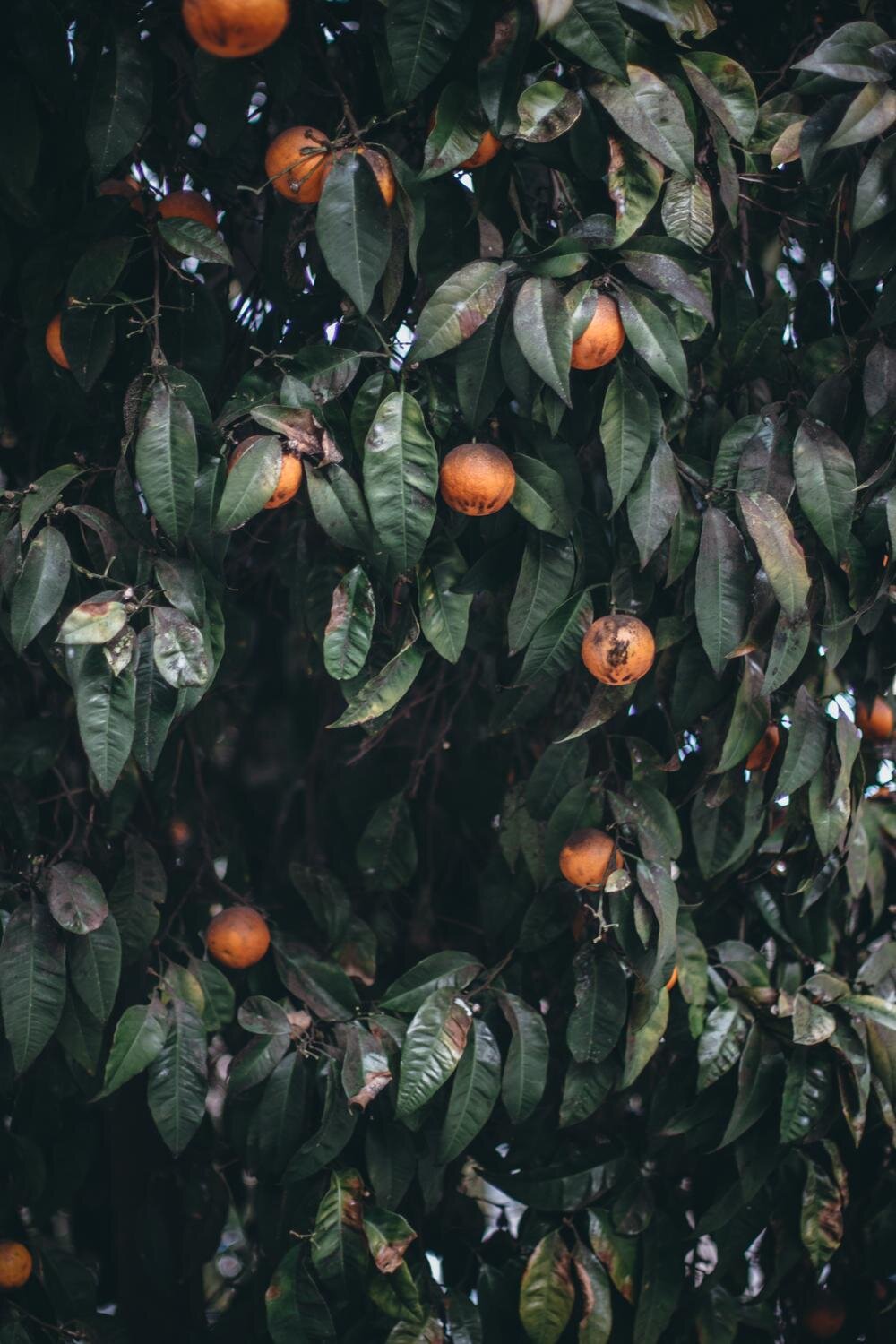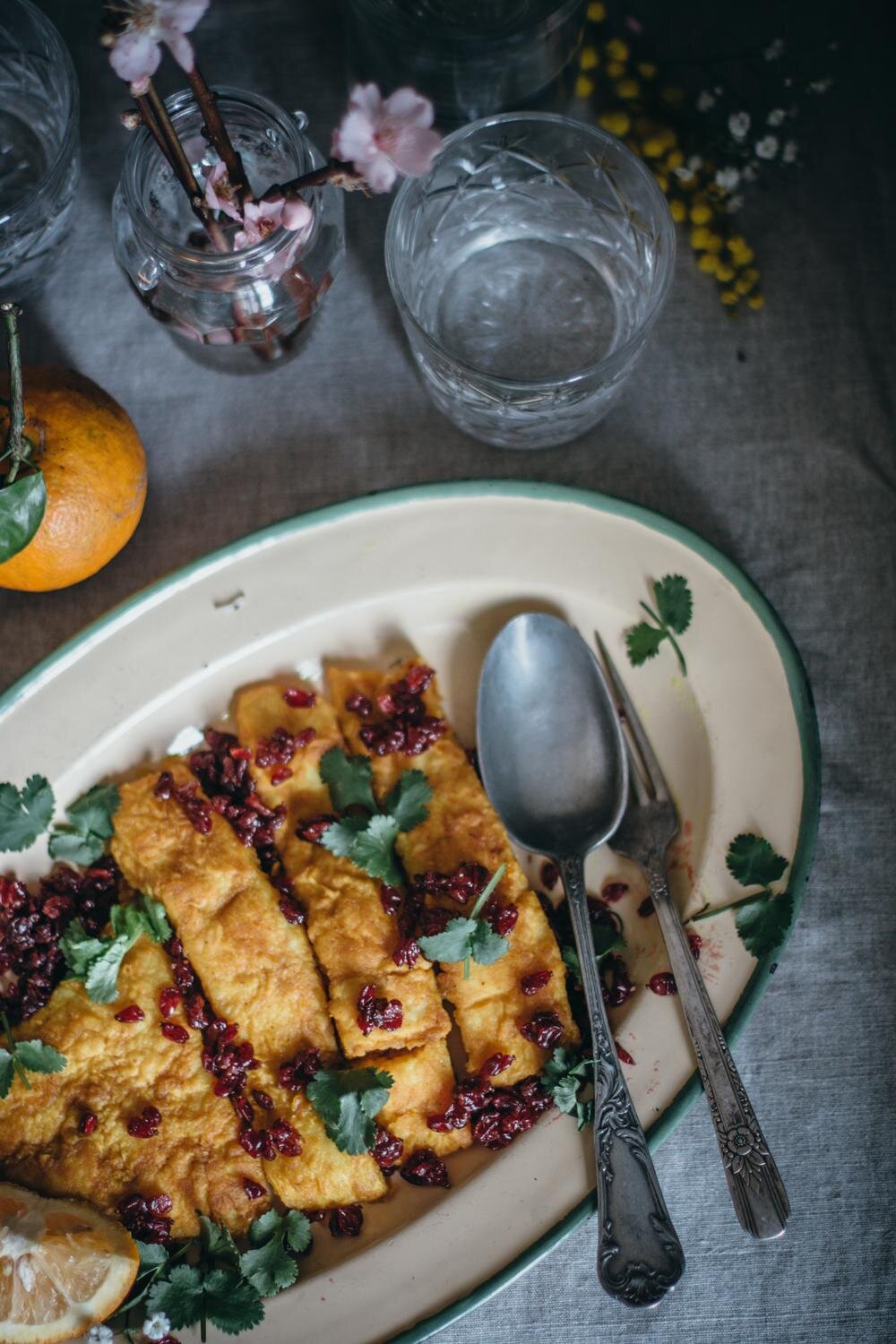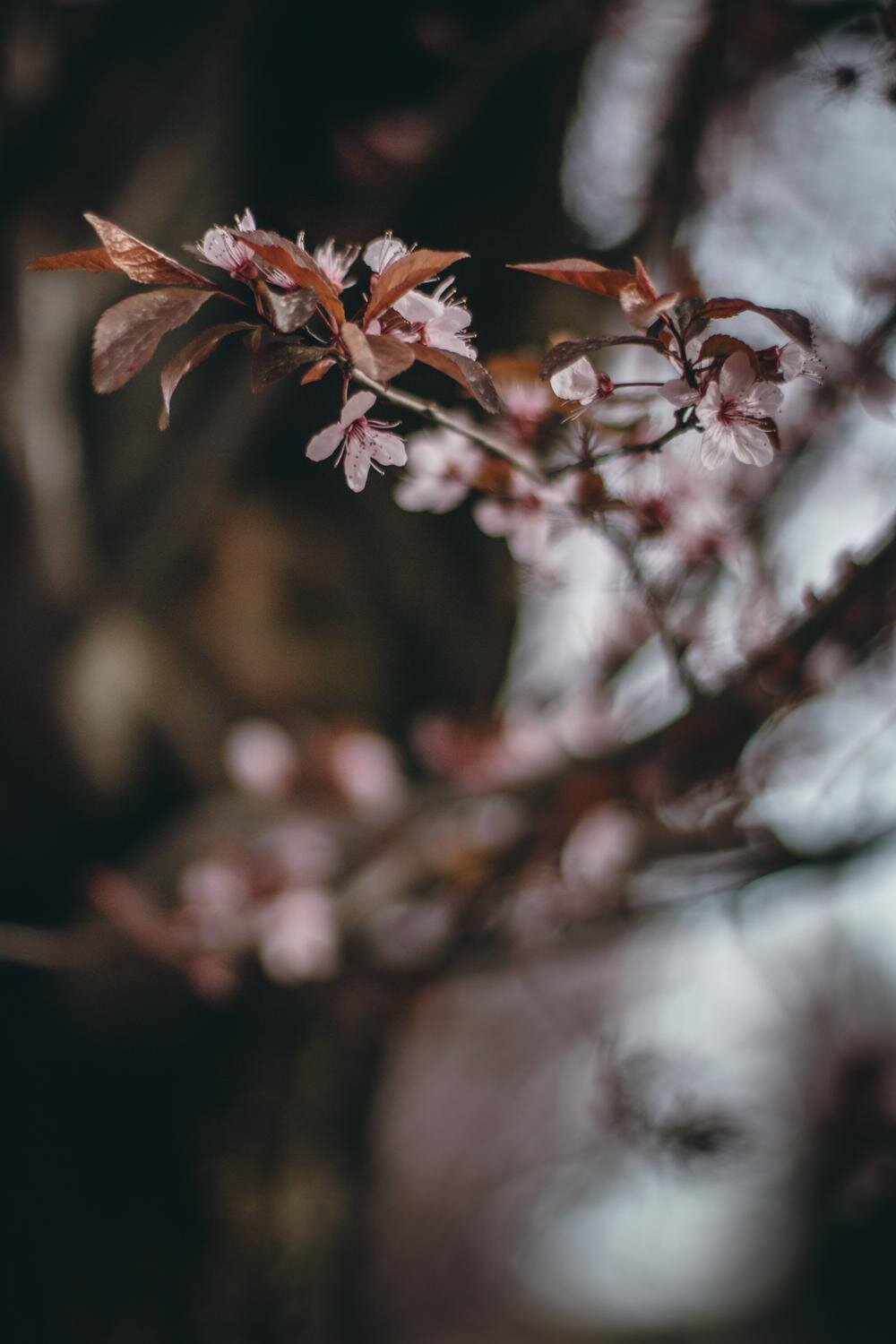Iranian Food Writers on Persian New Year and Norouz
I used to absolutely hate fish as a child. While I was typically a good eater, I would not so much as touch fish. On ordinary days, it was not much of a problem: Not so many Iranian dishes are based on seafood, since only two small parts of the cat-shaped country at the north and south touch the sea. But on Norooz, the Iranian celebration that marks the beginning of the new year on the first day of spring, my fish-hating habit meant disaster.
On March 20th, the last day of the year, Iranians around the world will eat Sabzi Polo ba Mahi, a fragrant pilaf with herbs (like chives, parsley, dill, cilantro, fenugreek) and sometimes fresh garlic, served alongside fish. The type of fish and its exact preparation varies from region to region and among families. In the northern parts of Iran, the Caspian White Fish is a renowned favorite, while in the south, fish come from the Persian Gulf and strong flavors like tamarind are added.
Back in my childhood days, I ended up eating my herby pilaf with a sad frittata, hastily made by my fed-up mom who had lost hope of feeding me the precious fish. It wasn’t exactly the most propitious start of the new year.
This is how the story of how I recreate recipes and rituals of Norouz in Rome begins in an article commissioned for Food52. Please read the whole story here and tell me what you think.
This year, I am really happy that major food publishings have dedicated articles, recipes and stories to the Persian new year and Norouz. The truth is that this beautiful, ancient and rich celebration that is celebrated by some 190 million people celebrate (from north of India to Turkey, with Iran, Afghanistan, Pakistan, Tajikistan and other countries in the middle), has been so much in the shadow.
My post for the annual roundup of the Persian food bloggers is a homage to the Iranian food writers around the world who have taken the responsibility of talking about our beautiful Iran, that is oh so much more than a banned country. So This is not one of my long posts with the long, multi-chapter story (you can read that on Food52), but a list of links for your Norouz reading and recipes. You can also find the recipe of my Sabzi Polo Mahi, the national dish of Norouz in the bottom. So enjoy reading, Happy 1396 and Sale No Mobarak!
The amazing Samin Nosrat (whose new book I can’t wait to get), cook and food writer on New York Times Food: The Verdant Food of Iran Entices at Persian New Year
Yasmin Khan, cook and author on Food52: Kick-Start Spring Cleaning the Iranian Way, With Khane-Tekani
Andy Baraghani, Senior Food Editor at Bon Appétit, on Bon Appétit: How I honor my family’s history with a persian new year feast
Louisa Shafia, author, on Food52: 6 Iranian-Americans You May Know + What Norooz Means to Them
Zoe Paknad on Food52: Why This Norooz Won’t (& Can’t) Be Like Other Years (my personal favorite), and also Welcoming the Year 1396 with Goldfish, Bonfires, and Seven S’s.
Fellow Bloggers:
My Caldron: Rose Tea
Parisa’s Kitchen: Pichagh-Gheimeh
Coco in the Kitchen: Yakh dar Behesht
Persian Herby Pilaf (Sabzi Polo) With Fish, for Norooz
Serves 4
This herby pilaf ("Sabzi Polo" in Persian) is served with fish on the first day of spring and the beginning of the new Persian year. In Iran, many families serve this dish for Norooz, and the tradition is also celebrated in Tajikistan, Afghanistan, Kurdistan, and other countries of the region. Note: The quantity of fresh herbs mentioned is for untrimmed herbs. If you get fresh, trimmed and cut herbs, you should use halve that amount. The ratio for the herbs is 30% parsley, 30% dill, 30% fresh coriander (cilantro), and 10% fenugreek. You can find Persian dried mix herbs for Sabzi Polo in international shops or online, which is the easiest choice. Just remember to soak the herbs 3 or 4 hours before cooking and to drain them completely.
For the fried fish and herby condiment
For the fried fish and herby condiment
Adapted from My Recipe On Food52
